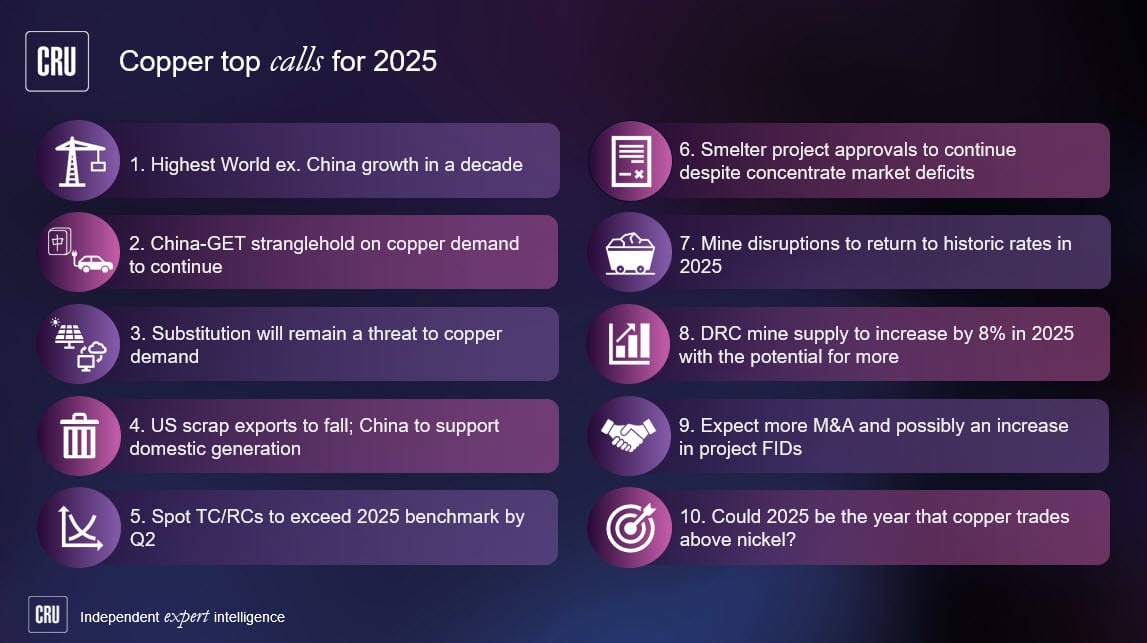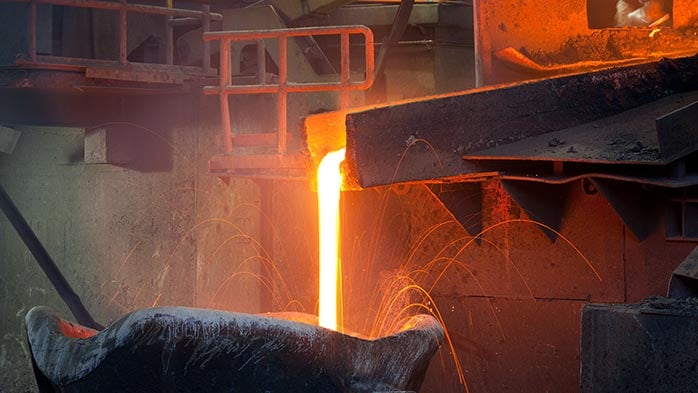Over the last year, the copper price has taken a further leg up, from $6,000/ t to over $7,000/ t. Indeed, recent trading levels have been higher than our last estimate of the incentive price, or long run marginal cost (LRMC), required to build new brownfield or greenfield mining projects, which was set at $3.00/ lb ($6,614/ t).
With a more compelling electric vehicle (EV) story now being told, many argue the copper market will face such heavy deficits by the mid to late 2020s that the long run price will have to be much higher than this in order to attract sufficient investment.
The EV demand forecast fog is clearing
While there remains considerable uncertainty over future EV production levels, 2017 witnessed a number of policy commitments aimed at phasing out the internal combustion engine (ICE) by governments around the world. The most significant of these came from China, where in November 2017 the government announced a new framework of policies comprising a potpourri of production quotas, fuel efficiency targets and credit trading schemes (see CRU Insight: Will China’s recent NEV policies lead to a new industry being created in Australia?).
As a result, not only are our EV forecasts higher than a year ago, but pure battery electric vehicles (BEVs) that consume around 80 kg of copper per vehicle, compared to 30-55 kg in hybrid models, now account for upwards of 50% of the total compared to less than 30% previously. In addition, the infrastructure piece should not be forgotten as it could add 30-50% to copper demand over and above that just in the vehicles themselves. This is not just charging points, although they are important especially if impatient drivers insist on ultra fast charging (see CRU Spotlight: Does “range anxiety” matter for Copper demand?). The associated growth in renewable energy is also a potential boon to copper demand because on a per megawatt (MW) basis it generally requires more electrical windings, associated cabling and central infrastructure such as transformers, inverters and switchgears. Beyond that the electrification of the transport sector will necessitate additional investment in distribution networks and substations as well as the development of energy storage solutions.
There could be unintended consequences for supply
As the chart below demonstrates the long term potential growth in EV-related copper consumption is jaw-dropping. From around 100,000 t last year to over 3 Mt in 2030 and almost 6 Mt by 2035, with the latter being equivalent to 20% of 2017 total world copper demand. There are a couple of caveats. First, these numbers represent total copper demand rather than refined metal consumption. However, globally, over 95% of the copper content in wire and cable is from cathode, as opposed to scrap, so the effect is relatively small. Second, ideally, we need to consider the net addition over and above what would be used if vehicles continued to be made with conventional power trains. This does reduce the 2035 number by around 1.2 Mt.
Far more important could be what is happening in the cobalt market. EV battery-related demand currently accounts for less than 10% of cobalt demand, but this share is set to increase to over 50% in a market that could double in size by the middle of the next decade, depending on advances in technology and choice of materials. Much of the required growth in mine production will have to come from the Democratic Republic of Congo (DRC), which accounts for around half of the world’s cobalt reserves. Some of the supply will be from tailings; however, the majority will have to come from copper-cobalt greenfield projects or brownfield expansions.
This raises the question as to whether there will be so much additional copper output as a consequence that it will negate and even exceed the EV-related increases in demand described above. We have crunched the numbers and it is close: on average, eight tonnes of copper are produced in the DRC for every one tonne of cobalt, while the same ratio for consumption in the EV sector is just less than ten to one. It is unlikely that the EV supply chain will become that exposed to a single commodity (cobalt) and a single country (DRC). More practically, potential copper supply from existing operations and known projects in the DRC is currently only just over 2 Mt/y at the most. Nonetheless, the analysis does usefully demonstrate that the EV sector’s development could have consequences for the supply side of the copper market as well as for demand.
Bucking a long term trend
Our narrative for the EV sector implies significant levels of investment over the next twenty years. Globally, renewables generating capacity and infrastructure spending alone is expected to be more than $300 bn per annum in real terms by the early 2030s. These financial demands will need to be met by public as well as private investment, at a time when many governments around the world have relatively limited fiscal space.
Looked at from a broader macroeconomic perspective, the move towards green energy may necessitate the reversal of a decades long downward trend in copper intensity, measured as a function of GDP, in the developed world. Indeed, as the chart above demonstrates, in the case of the USA, such a change would need to reverse a near seventy year downward trend.
Watch the relative price
Even if on paper there is a multi-million tonne gap in copper supply by the late 2020s, before you start plugging $5.00/ lb into the valuation model for your hitherto uneconomic mine project, there is one other consideration - substitution. As the chart demonstrates, a copper to aluminium price ratio above three, which has been the case over the last decade, is historically an aberration. It is no coincidence that there was strong substitution away from copper towards aluminium (e.g. power cable) and other materials (e.g. plastics for plumbing tube), along with thrifting, during the first decade-and-a-half of the 2000s. Remember that today, for all the capital currently being thrown at the EV and renewables sectors, companies still employ teams of people whose primary purpose is to ‘engineer-out’ expensive raw materials from the manufacturing process.
In the absence of much higher power costs, a lack of raw material (bauxite) scarcity means that the long run aluminium price is unlikely to diverge significantly from recent trading levels. Consequently, an extended period of dollar per tonne exchange prices starting with an eight handle or more risks catalysing another wave of copper demand destruction in some end-use sectors.
In conclusion, there is little doubt that the copper LRMC we publish in the forthcoming Copper Long Term Market Outlook – 2018 edition will be higher than last year. However, as the analysis above highlights, uncertainty over both demand and supply mean that multiple future scenarios are possible and not all are necessarily positive.

















